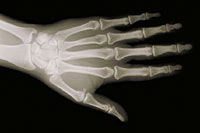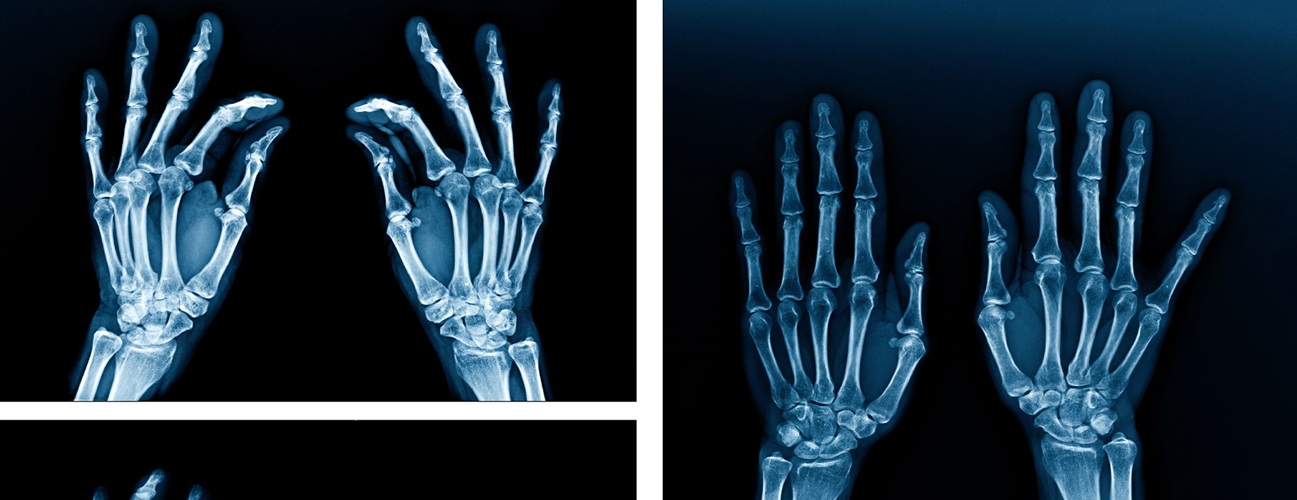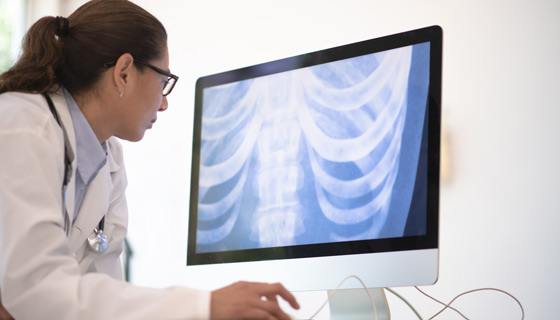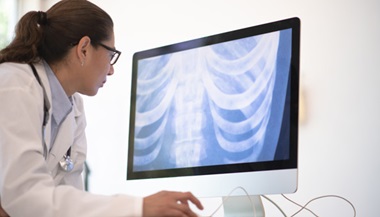X-Rays

What are X-rays?
X-rays use invisible electromagnetic energy beams to produce images of internal tissues, bones, and organs on film or digital media. Standard X-rays are performed for many reasons, including diagnosing tumors or bone injuries.
X-rays are made by using external radiation to produce images of the body, its organs, and other internal structures for diagnostic purposes. X-rays pass through body structures onto specially-treated plates (similar to camera film) or digital media and a "negative" type picture is made (the more solid a structure is, the whiter it appears on the film).
When the body undergoes X-rays, different parts of the body allow varying amounts of the X-ray beams to pass through. The soft tissues in the body (such as blood, skin, fat, and muscle) allow most of the X-ray to pass through and appear dark gray on the film or digital media. A bone or a tumor, which is more dense than soft tissue, allows few of the X-rays to pass through and appears white on the X-ray. When a break in a bone has occurred, the X-ray beam passes through the broken area and appears as a dark line in the white bone.
X-ray technology is used in other types of diagnostic procedures, such as arteriograms, computed tomography (CT) scans, and fluoroscopy.
Radiation during pregnancy may lead to birth defects. Always tell your radiologist or doctor if you suspect you may be pregnant.
Find an Imaging Location

How are X-rays performed?
X-rays can be performed on an outpatient basis, or as part of inpatient care.
Although each facility may have specific protocols in place, generally, an X-ray procedure follows this process:
The patient will be asked to remove any clothing or jewelry which might interfere with the exposure of the body area to be examined. The patient will be given a gown to wear if clothing must be removed.
The patient is positioned on an X-ray table that carefully positions the part of the body that is to be X-rayed--between the X-ray machine and a cassette containing the X-ray film or specialized image plate. Some examinations may be performed with the patient in a sitting or standing position.
Body parts not being imaged may be covered with a lead apron (shield) to avoid exposure to the X-rays.
The X-ray beam will be aimed at the area to be imaged.
The patient must be very still or the image will be blurred.
The technologist will step behind a protective window and the image is taken.
Depending on the body part under study, various X-rays may be taken at different angles, such as the front and side view during a chest X-ray.





